Abstract
The interaction of temperature and NaCl concentration in affecting the survival of three strains of Vibrio parahaemolyticus was studied in Trypticase soy broth and fish homogenate. Cells of V. parahaemolyticus suspended in Trypticase soy broth without NaCl were quite unstable and readily killed. The presence of NaCl appeared to be protective to the cells at 48 ± 1 C, with the optimal concentration strain-dependent for the 3 to 12% range tested. Temperatures of 5 ± 1, -5 ± 1, and -18 ± 1 C reduced the number of viable organisms per milliliter regardless of the NaCl concentration. In the presence of NaCl, viable cells, in numbers ranging up to 580 per ml, were still detected at the end of 30 days of storage. Similar results were obtained for cells suspended in fish homogenate, except that fish homogenate itself was protective as compared with Trypticase soy broth. This protection was significantly lower than that provided by NaCl in any amount tested.
Full text
PDF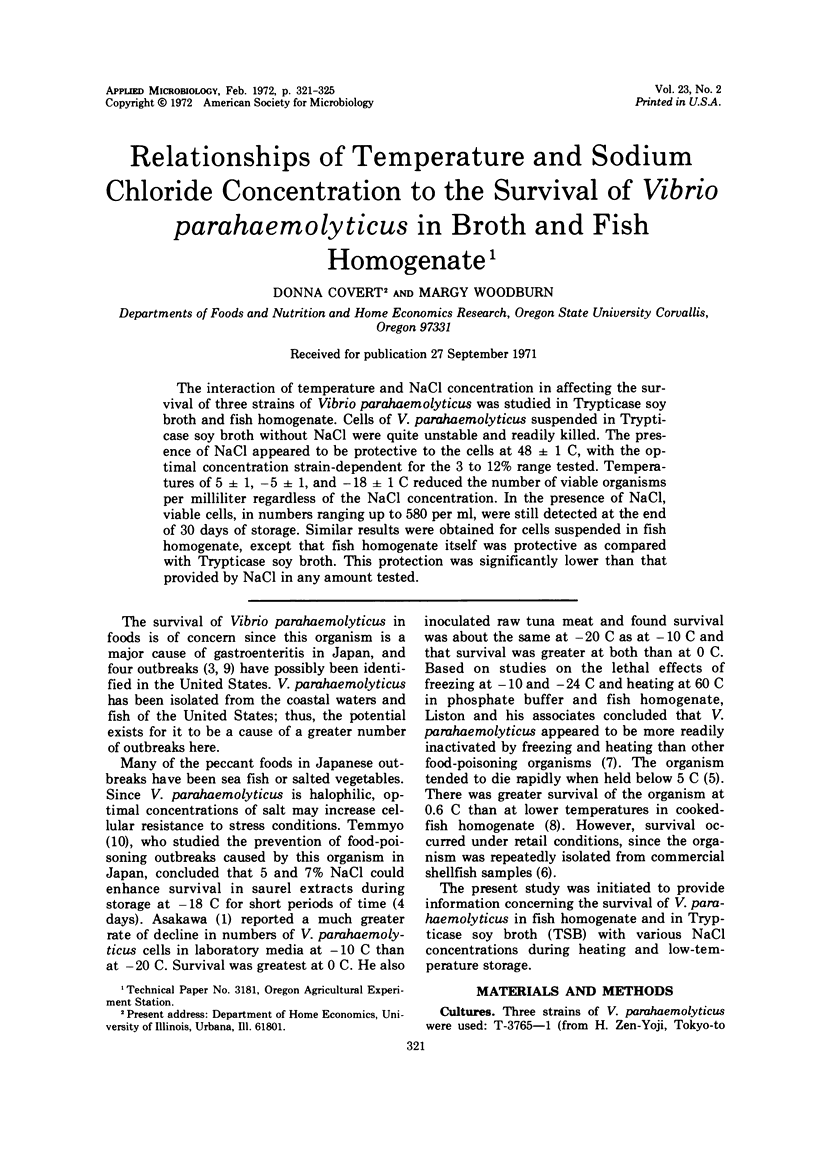
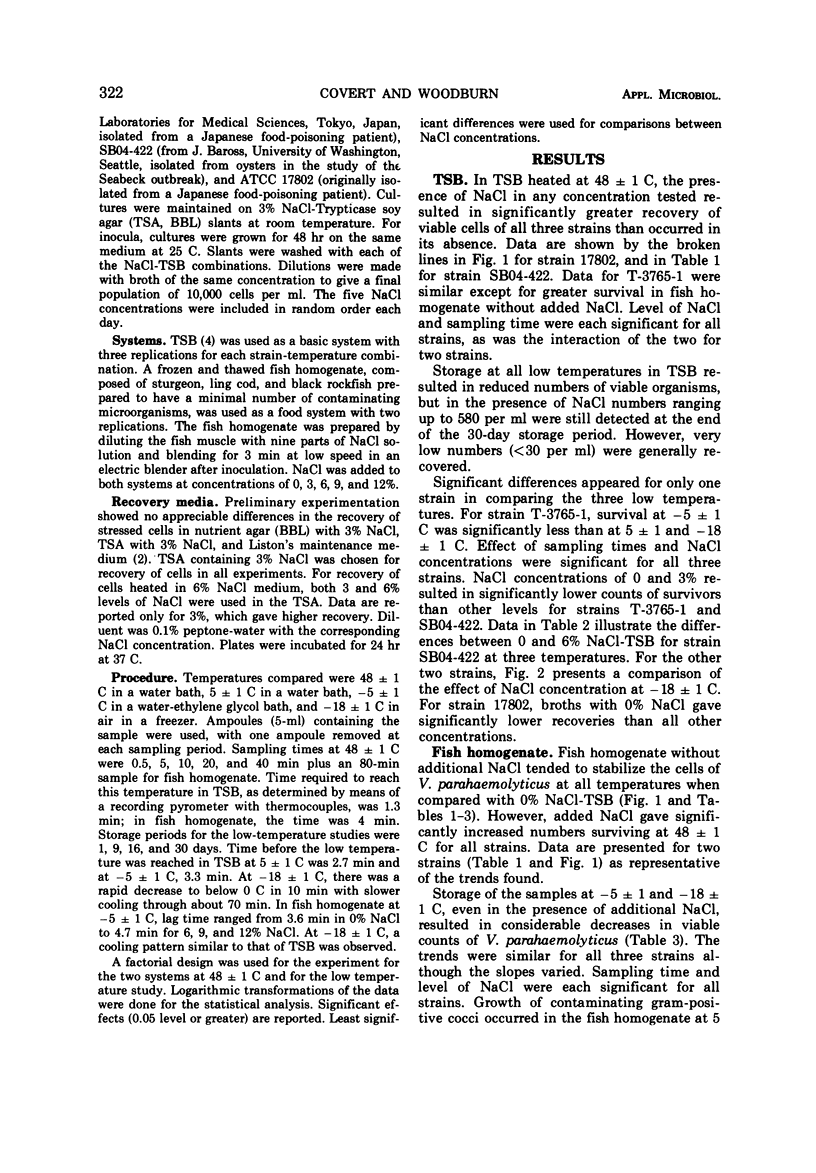
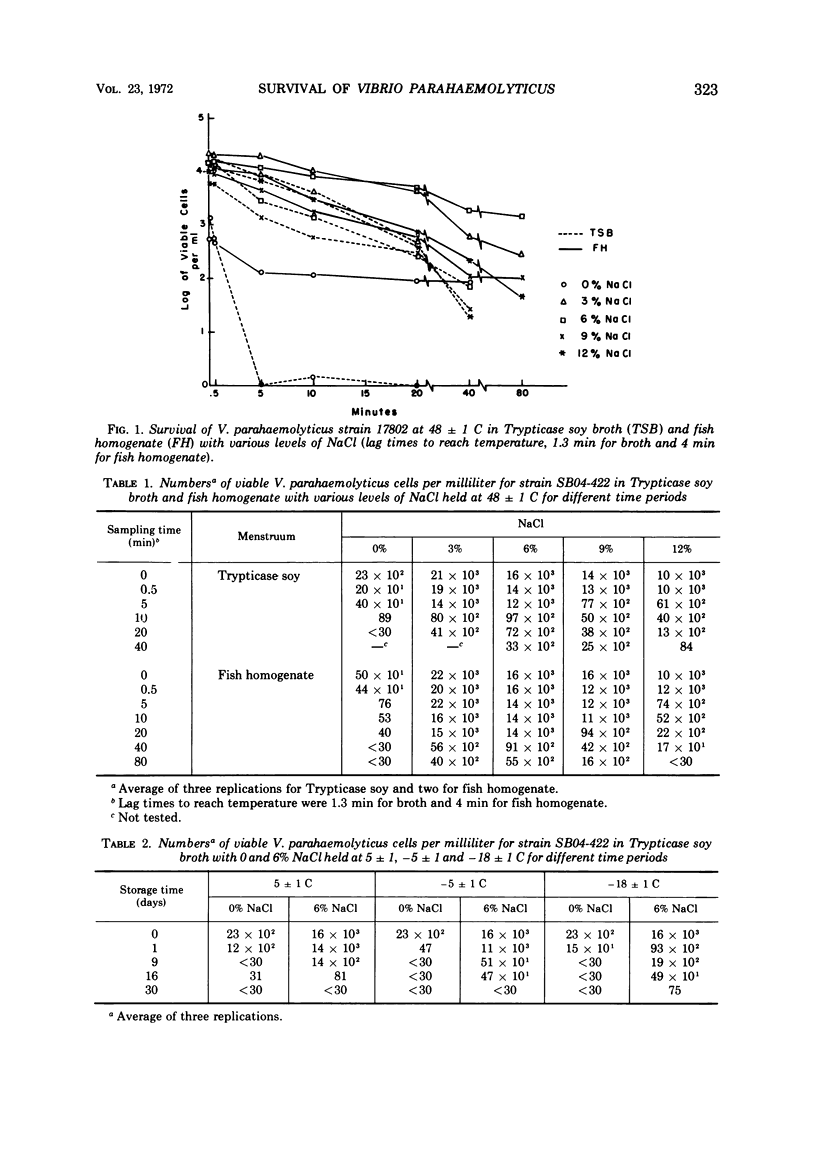
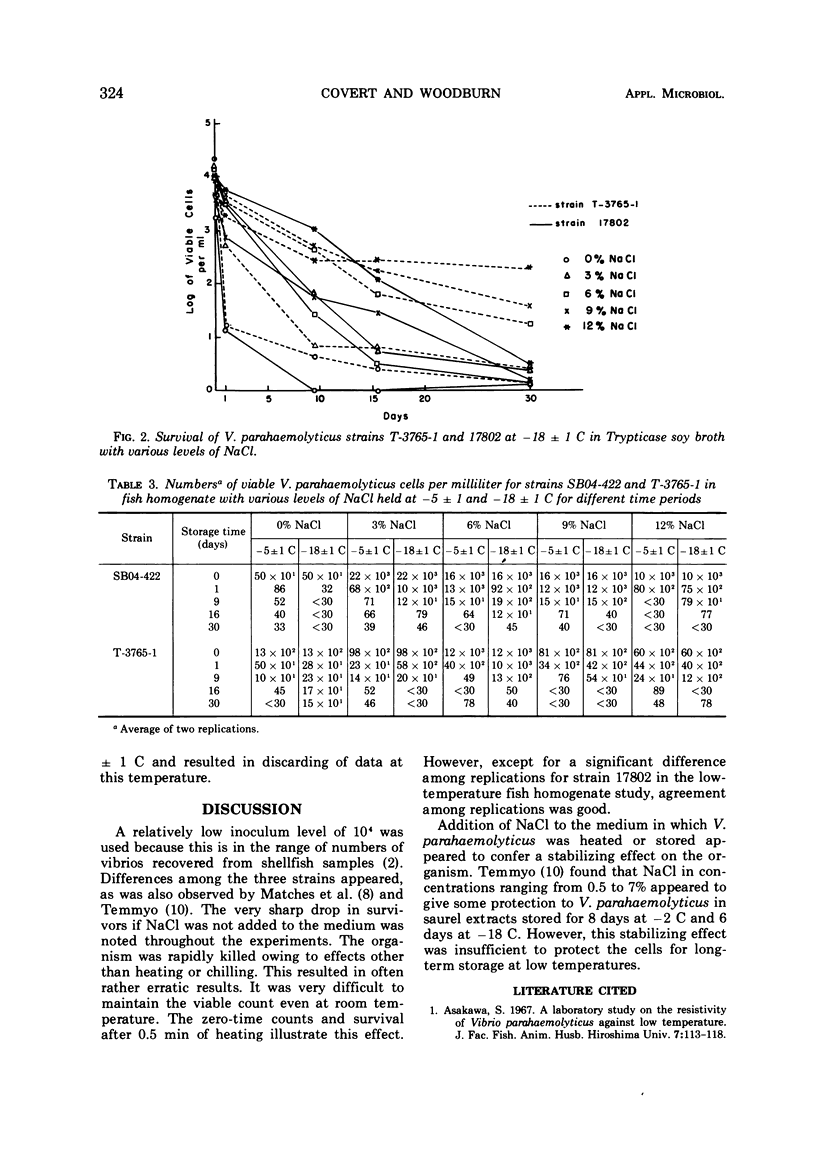
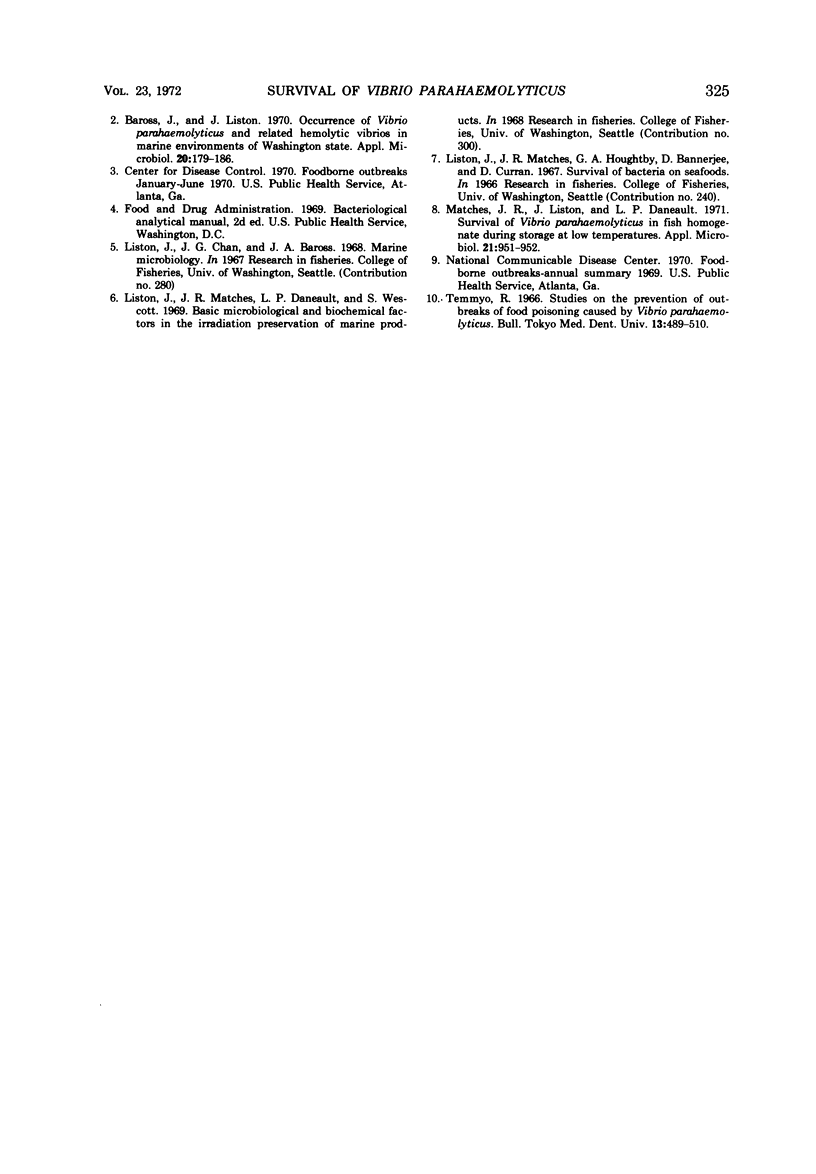
Selected References
These references are in PubMed. This may not be the complete list of references from this article.
- Baross J., Liston J. Occurrence of Vibrio parahaemolyticus and related hemolytic vibrios in marine environments of Washington State. Appl Microbiol. 1970 Aug;20(2):179–186. doi: 10.1128/am.20.2.179-186.1970. [DOI] [PMC free article] [PubMed] [Google Scholar]
- Matches J. R., Liston J., Daneault L. P. Survival of Vibrio parahaemolyticus in fish homogenate during storage at low temperatures. Appl Microbiol. 1971 May;21(5):951–952. doi: 10.1128/am.21.5.951-952.1971. [DOI] [PMC free article] [PubMed] [Google Scholar]
- Temmyo R. Studies on the prevention of outbreaks of food poisoning caused by Vibrio parahaemolyticus. Bull Tokyo Med Dent Univ. 1966 Dec;13(4):489–510. [PubMed] [Google Scholar]


